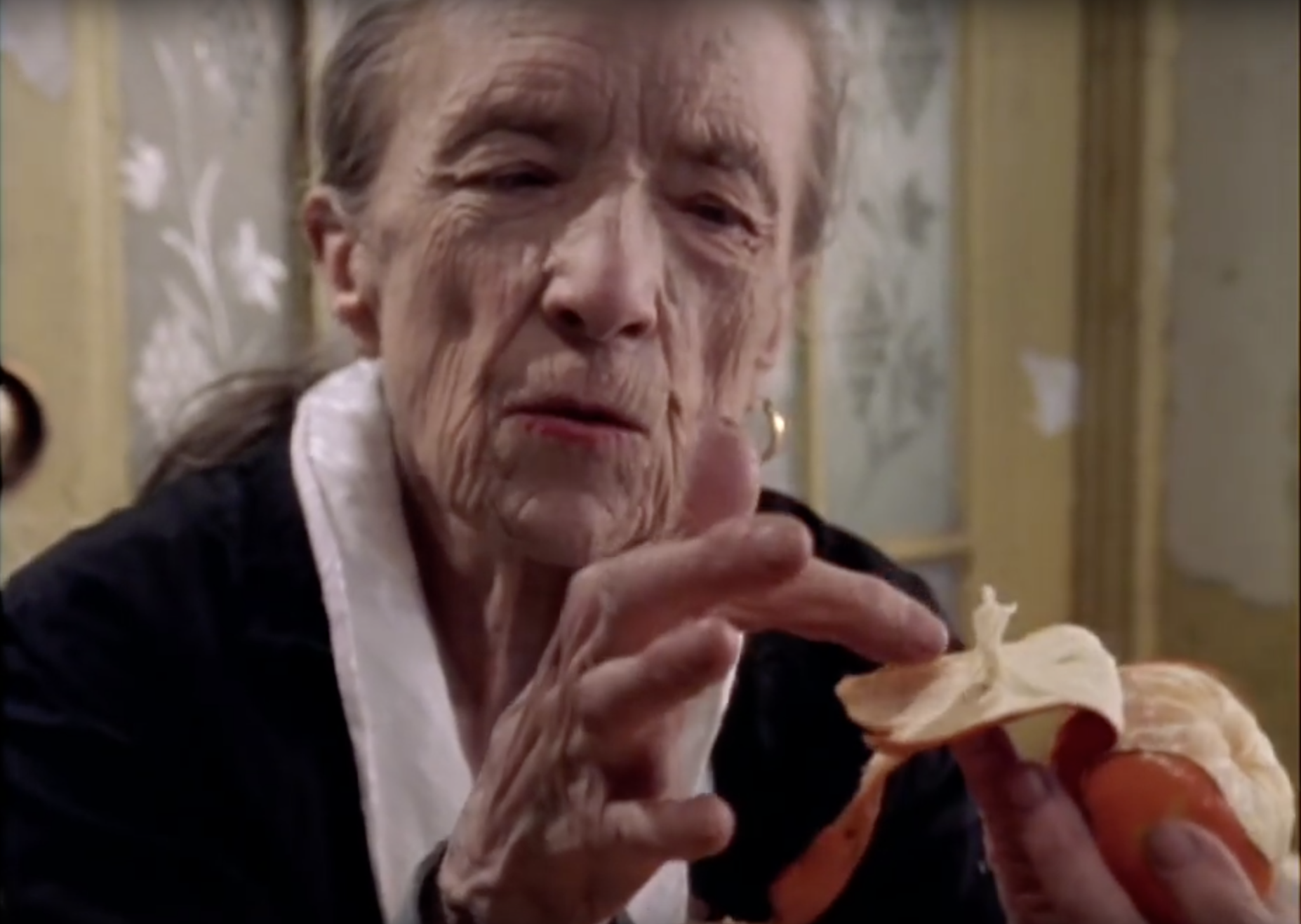Regardless of what media channels you follow, you’ve probably seen an uptick in video content in the last few years. While online magazines have been replacing the printed periodical for quite some time, streaming video is also becoming the primary way that many of us “cord-cutters” watch television programming. (After all, “Netflix and Chill” is perhaps one of the longest-running and mainstream memes since the history of memes.) So, it should be no surprise that platforms like DIS.art, The 360 Art Project, and Daily Plinth are turning towards streaming video to disseminate editorial content about art.
But before we get into the innovative ways that these new platforms are making video media for art audiences online, let’s not forget that they’re not the first. Art21 has been making videos about art and artists since 2001, first appearing on cable via PBS. As far as we can tell, the non-profit began streaming content on their blog in 2008. Today they have a handful of series; the newest one is “New York Close Up,” which focuses on artists within the first decade of their career, living in—you guessed it—New York. (Artspace partnered with Art21 and published several of their “New York Close Up” episodes on our site—watch Jordan Casteel , Avery Singer , or Aki Sasamoto speak about their work and walk you through their studios.)
Similar in format to Art21 is The 360 Art Project , with one very novel exception: the filmmakers use a video camera that can capture 360-degree video, allowing users to click and drag their screens for a more “immersive” viewing experience. The relatively new project doesn’t have the backing or infrastructure to crank out daily, weekly, or even monthly content like some of the other platforms we mention here, but we did enjoy their feature on Hannah Whitaker and we’re looking forward to how new technologies like virtual reality, augmented reality, and 360 video capture might change the ways we experience art in the very near future.
An even newer start up is Daily Plinth , a website started by dealer-cum-art fair director-cum-entrepreneur Cornell DeWitt . The site produces no video content at all; instead, it aggregates it, pulling pre-existing videos about art from a wide range of sources (but mostly museums) and organizes them to make them more accessible. There are a lot of these so-called aggregator sites out there, which act as editors or curators of digital content—but this is the first site to host exclusively video content, and content pertaining to the art world. What makes the site brilliant from a business standpoint is this: Because websites and publications need to upload their videos to Youtube or Vimeo before they’re able to embed them into their own webpages, their videos become publicly accessible and freely embeddable. Thus, Daily Plinth doesn’t need to ask permission from the video’s producer or link back to the original source in order to host the content on its site. How does the site make money? Not from ads. Instead, they promote sponsored content; contributors pay between $100 to $5,000 for the privilege, according to Artnet News.
From a consumer’s perspective, Daily Plinth offers a wide range of art-related video content that, theoretically, you could find on your own… if you actually knew where to look. Daily Plinth makes that part easy, releasing daily videos according to a weekly calendar organized by seven categories, one for each day of the week: Museums, Galleries, Studios, Vault (older content), Market, Longform, and Community. So, on Mondays Daily Plinth releases a video from or about a museum, on Tuesdays they release a video from or about a gallery, and so forth—you get the picture.
 Screenshot of
Louise Bourgeois Peels a Tangerine
on Daily Plinth
Screenshot of
Louise Bourgeois Peels a Tangerine
on Daily Plinth
What might be the most exciting part of Daily Plinth is their Vault category, where you can find a 1980 interview with David Hockney , or a tutorial given by Louise Bourgeois on how to peel a tangerine so that it looks like a figure with a erect penis (aw, thanks Louise!). But in the end, this site hosts a whole bunch of talking heads—a documentary format that in most cases, isn’t exactly titillating. Though Daily Plinth is exciting for its ability to aggregate video content all in one place, it doesn’t really help the fact that most of the art-related video content out there is, well, kind of boring.
DIS.art , a new video platform that launched in January, has a far more innovative approach to what they’ve been calling “edutainment.” If you aren’t familiar with DIS, it’s important to understand how influential they’ve been on the younger generation of artists, and how they’ve already set out to disrupt how we consume art discourse once before, and succeeded. The collective comprised of Lauren Boyle , Solomon Chase , Marco Roso, and David Toro launched an online magazine together in 2010, a humorously clever and deeply subversive platform that allowed a rotating cast of writers, stylists, artists, and musicians to create content that often teetered between being about art, and just being art.
Perhaps their most popular and unique offerings were their fashion editorials—like a “shoe layering” style guide called Shoes in Shoes (“Whether it's loafers in sandals or heels in boots, we say if the shoe in shoe fits, wear it,”)—and their own line of stock images that employed artists like Anicka Yi and Jordan Lord , Dora Budor, Ian Cheng , and Timur Si-Qin to create jpgs that could be bought and used commercially for any purpose.
DIS Magazine ended last year, as the group pivots towards a new medium—video—albiet with the same collaborative, disruptive MO we’ve come to expect from them. Debuted as a multi-media exhibition in the lobby of the De Young Museum in San Francisco called “Genre-Nonconforming: The DIS Edutainment Network,” the DIS.art platform releases three new videos a week, created by a variety of artists—some who’ve worked with DIS in the past and some newcomers. In a video interview with Lauren Boyle produced by the De Young Museum, Boyle asks, “What does PBS look like for Gen Z? [ Adam Curtis ’s docuseries] Century of the Self meets Sesame Street .” The goal for DIS.art, she says, is to reach more people by taking complex conversations that are happening in contemporary art, culture, and technology, and make them more accessible without dumbing them down.
Currently on DIS.art, users can type in their email address to access the six videos DIS has released since the platform’s launch. (These videos are currently free to watch, though DIS will soon roll out a paid subscription plan.) We can’t say we totally buy Boyle’s claim that all of these videos make complex conversations more accessible (as we’re writing this, we’re having trouble figuring out how to even explain what each of them are about), but what DIS has succeeded in doing is what they’ve always been good at: producing content that is endlessly entertaining, content that could easily be considered art in its own right.
Some of the videos are more straight-forward and educational in the traditional sense than others. Jacob Hurwitz-Goodman and Daniel Keller ’s The Seasteders is a 28-minute documentary that follows a group of libertarians convening in Tahiti as they make plans to build floating cities off the coast of French Polynesia with their own “special government frameworks.” Without a heavy hand, the filmmakers expose a community of (mostly rich, white, male) people who essentially want to live their lives (and park their money) outside of government scrutiny. (Since DIS released the video, The Seasteading Institute has allegedly taken footage from the DIS-produced documentary and used it to edit their very own self-serving promotional video. What a world.)
 Screenshot of
The Seasteders
on DIS.art
Screenshot of
The Seasteders
on DIS.art
On the other end of the “edutainment” spectrum is Will Benedict and Steffen Joergensen ’s “cooking show,” which frenetically skips between amateur cooking tutorials culled from Youtube, and footage of a “chef” making french fries with two special ingredients: potatoes, and blood. Perhaps the most coherent segment of the video is at the very end, as the voice of a digitally rendered otherworldly humanoid creature is superimposed over a dystopian urban landscape; it says, “It is the flesh lore that leads us into the idea of the dark. Please join us next time when we return to that essentially dark state, the egg.” Okay, sure.
One of the most compelling videos on DIS.art is by artist Ilana Harris-Babou (who we just wrote about in " 9 Artists to Watch in February 2018 .") The video titled Reparation Hardware riffs on Restoration Hardware, a home goods brand that goes full throttle on the 'locally sourced,' 'hand-crafted,' 'genuinely authentic' aesthetic that loves reclaimed shiplap, distressed wood, and its white and wealthy client base. In an old barn peacefully decaying in a picturesque wildflower field, the artist speaks about reparations in a way that's as easy to swallow as a new line of home furnishings: "Their liberation was hand-crafted, authentic, engineered and made in the US... Reparations—what is it? It's a way to give back a little... With reparations you can take the past into your home tastefully. Truly dealing with how we live, recognizing one another's differences is something that hasn't happened yet—until now." Using "tools" made of ceramic and unfired clay, the artist makes futile attempts at hammering nails into wood, perhaps suggesting that while making amends for wrong doing should be as considered as the furniture we live with, reparations may be too superficial and ineffective, much like the words like "authentic" and "locally-sourced" that have come to mean little beyond self-soothing qualifiers for exploitative consumption habits.
...
Art enthusiasts are no different from the rest of the public, in that they’re hungry for educational, multi-media content. Editorial outlets are responding to the demand, and we’re grateful for it. But ultimately, collectives like DIS are the most poised for taking “the medium is the message” motto to heart to not only deliver educational content in video form, but to also subvert the video format and to experiment with new ways of making art to be streamed rather than hung. (Could Netflix be to contemporary artists as the US postal service/mass media was to Fluxus?) As we become increasingly accustomed to turning on our screens to be entertained, the potential grows for art to extend outside of the gallery walls and into the digital formats that are already ingrained in the ways we ingest content on a daily basis. We hope to see more and more innovative, cross-disciplinary, and subversive artworks out there—and we’re counting on DIS to pave the way.
RELATED ARTICLES:
Video Art Reigns at Mexico City's Material Art Fair 2017
Watch "Avery Singer's Next Painting"—Art21's Newest Short Video



























